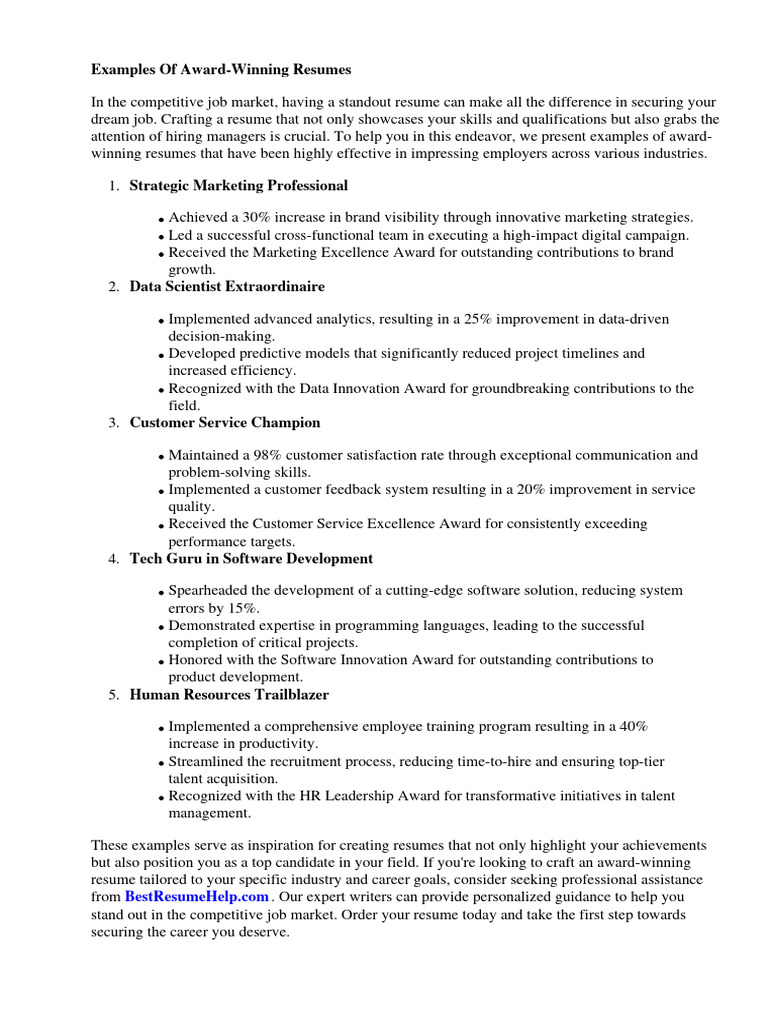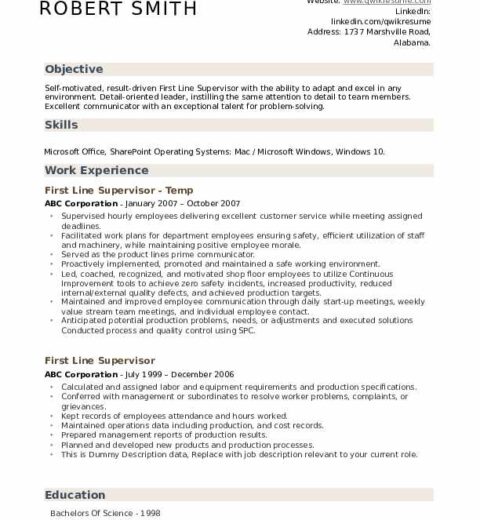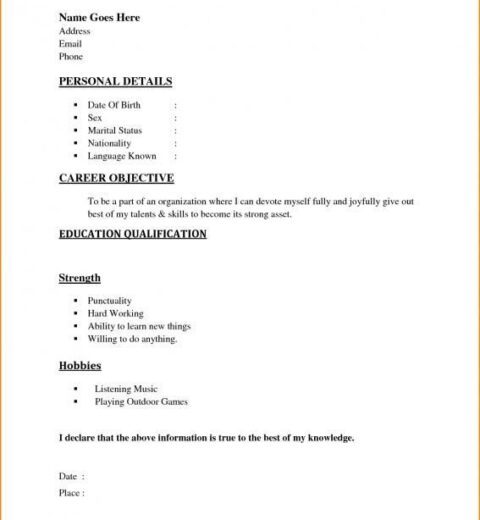In a competitive job market, the importance of an exceptional resume cannot be overstated. A well-crafted resume can serve as the difference between securing an interview and being overlooked. It’s crucial to present yourself in a manner that not only highlights your experience and skills but also resonates with potential employers. The best resumes are visually appealing, concisely formatted, and rich in content that showcases proficiency and professionalism.
To embark on the journey of creating an outstanding resume, it’s essential to grasp the distinguishing features that set exemplary documents apart from the average. The following elements constitute the foundation of an effective resume.
1. Clean and Professional Layout
The first thing that catches the eye is the design. Resumes should possess a clean and professional layout. Avoid elaborate fonts and excessive graphics that may detract from the content. Instead, opt for streamlined fonts such as Arial, Calibri, or Times New Roman in sizes ranging from 10 to 12 for the body text. Utilize headings, subheadings, and bullet points effectively to enhance readability.
Margins should be consistent and sufficiently spacious to create a neat appearance. A standard width of one inch on all sides typically works well. Additionally, employing white space judiciously can prevent the document from appearing cluttered. A well-organized resume aids in the swift comprehension of your qualifications.
2. Compelling Objective or Summary Statement
The opening statement of a resume can significantly shape the reader’s perception. A well-articulated objective or summary statement offers a succinct overview of your career aspirations and highlights your core competencies. This section should be tailored to align with the specific role you are applying for, demonstrating clarity of purpose and relevance.
For instance, rather than a vague statement like “Seeking a challenging role,” a more engaging approach would be “Dynamic marketing professional with over five years of experience in digital strategy development, looking to leverage expertise in data analytics to drive growth at XYZ Corporation.” This establishes a direct connection to the prospective employer’s needs.
3. Relevant Work Experience
When enumerating your work experience, it’s vital to focus on relevancy. Job titles, company names, and dates of employment should be prominently displayed to provide a clear timeline of your career progression. Descriptions of your roles should emphasize achievements rather than mere responsibilities. Utilize quantifiable metrics and action verbs to illustrate the impact of your contributions.
For instance, instead of stating, “Responsible for managing a team,” consider using, “Led a team of five in launching a new product line that generated $500,000 in revenue within the first year.” This not only conveys your role but also highlights the results of your leadership.
4. Skills and Certifications
In today’s data-driven world, showcasing relevant skills has become imperative. Create a distinct section for skills and certifications that aligns closely with the job description. Be specific; for instance, rather than simply stating “project management,” delineate your proficiency in various methodologies such as Agile or Scrum.
Certifications pertinent to your field can enhance your candidacy and demonstrate your commitment to professional development. Accompanying these skills with real-world applications provides additional credibility to your claims.
5. Education and Training
The education section should list your degrees and any additional training relevant to the position. Start with the highest degree obtained, followed by the institution’s name and graduation date. If you possess certifications or completed specialized courses—such as a digital marketing boot camp—these should be included as well.
While it is common to list education at the bottom of the resume, consider placing it higher if you are a recent graduate or applying for a role that heavily emphasizes educational qualifications.
6. Tailoring the Resume for Specific Roles
One practice that cannot be overlooked is the tailoring of resumes for specific job applications. A generic resume may fail to capture the employer’s interest. Carefully read the job description and integrate relevant keywords, skills, and experience that mirror the employer’s requirements. This not only demonstrates your attentiveness but also helps your application pass through Applicant Tracking Systems (ATS) used by many companies.
7. Proofreading and Final Touches
After drafting the resume, the next pivotal step involves meticulous proofreading. Grammatical errors and typographical mistakes can leave a negative impression. Consider seeking feedback from peers or professionals in your field for a comprehensive review. Utilizing tools designed to enhance writing quality can also be beneficial.
Finally, ensure that your contact information is current and prominently placed. This includes your name, phone number, email address, and LinkedIn profile, if applicable. An outdated contact detail could result in lost opportunities.
Conclusion
In summary, the best resumes encapsulate professionalism, clarity, and relevance. A polished document not only highlights your career achievements and skills but also impresses upon hiring managers your dedication to excellence. By adhering to design principles, articulating experiences meaningfully, and customizing applications for specific opportunities, job seekers can significantly improve their chances of making a lasting impression. Thus, it is imperative to invest time and effort into crafting a resume that effectively communicates your unique value proposition.




